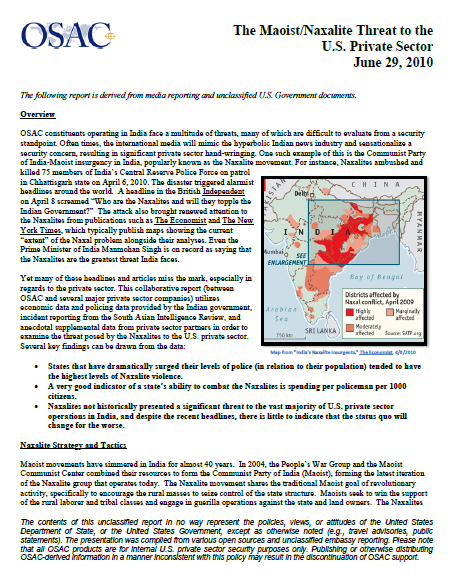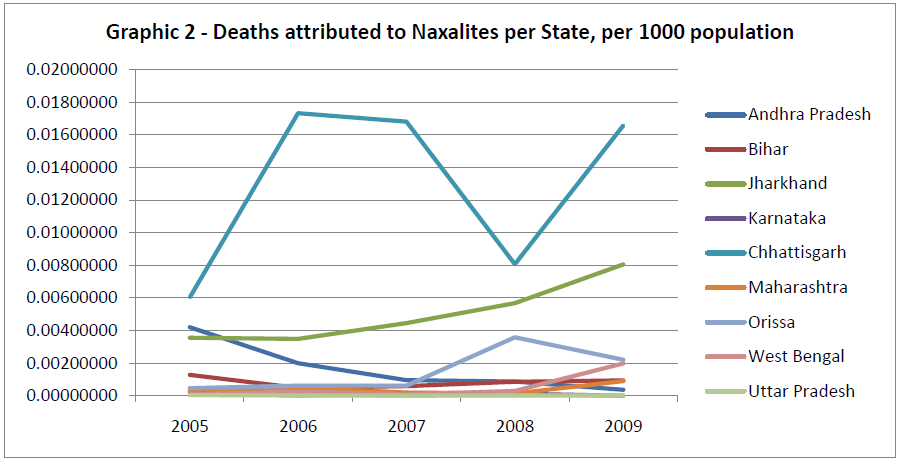 The Maoist/Naxalite Threat to the U.S. Private Sector
The Maoist/Naxalite Threat to the U.S. Private Sector
- 6 pages
- The presentation was compiled from various open sources and unclassified embassy reporting. Please note that all OSAC products are for internal U.S. private sector security purposes only. Publishing or otherwise distributing OSAC-derived information in a manner inconsistent with this policy may result in the discontinuation of OSAC support.
- June 29, 2010
OSAC constituents operating in India face a multitude of threats, many of which are difficult to evaluate from a security standpoint. Often times, the international media will mimic the hyperbolic Indian news industry and sensationalize a security concern, resulting in significant private sector hand-wringing. One such example of this is the Communist Party of India-Maoist insurgency in India, popularly known as the Naxalite movement. For instance, Naxalites ambushed and killed 75 members of India’s Central Reserve Police Force on patrol in Chhattisgarh state on April 6, 2010. The disaster triggered alarmist headlines around the world. A headline in the British Independent on April 8 screamed “Who are the Naxalites and will they topple the Indian Government?” The attack also brought renewed attention to the Naxalites from publications such as The Economist and The New York Times, which typically publish maps showing the current “extent” of the Naxal problem alongside their analyses. Even the Prime Minister of India Manmohan Singh is on record as saying that the Naxalites are the greatest threat India faces.
…
Naxalite Strategy and Tactics
Maoist movements have simmered in India for almost 40 years. In 2004, the People’s War Group and the Maoist Communist Center combined their resources to form the Communist Party of India (Maoist), forming the latest iteration of the Naxalite group that operates today. The Naxalite movement shares the traditional Maoist goal of revolutionary activity, specifically to encourage the rural masses to seize control of the state structure. Maoists seek to win the support of the rural laborer and tribal classes and engage in guerilla operations against the state and land owners. The Naxalites also attack infrastructure that links rural areas to the state such as communication towers, power lines, roads, and train links. They have also been involved in work-stoppages and economic shutdowns, called bandhs.
In the past, the Naxalite movement was viewed as merely a state and local issue. Individual states were in charge of combating the militants themselves, and were given broad mandate to do so. The federal government helped states arm people’s militias, generally with poor results. While this paramilitary option was cheap and produced body counts, the Maoist threat continued to spread for the next few decades. The structure of the Naxalite movement is similar to that of other insurgency movements. While there is a loose centralized leadership core that provides guidance, much of the work is done by auxiliaries at the local level (generally by village). Local leaders are in charge of recruiting, training, and leading groups of 10 to 20 fighters. These groups work to become the legitimate authority in the eyes of the public at the local level, supplanting police, elected officials, and other leaders.
…

